Why Cycle in Greece?
From olive groves to island harbors, cycling in Greece combines timeless history, dazzling scenery, and over 300 days of sunshine a year.
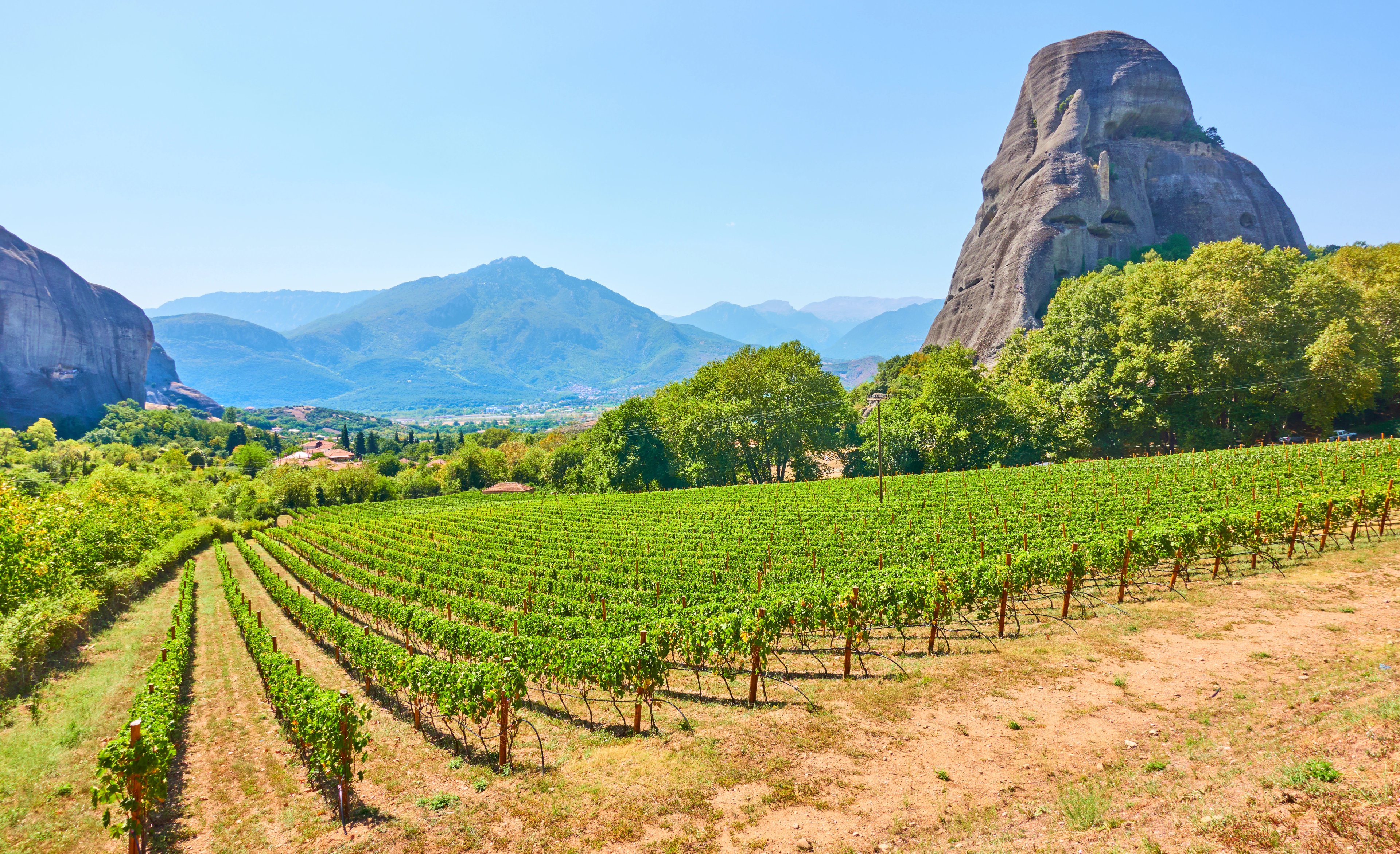
Quick links
Reasons to Cycle in Greece
Greece pairs coastal riding and island-hopping freedom with routes that pass living history—classical temples, Byzantine monasteries, and whitewashed villages above sapphire bays.
Sunshine, sea breezes, and short hops between regions make it easy to shape a trip around beaches one day and mountain vistas the next. Add reliable ferries, welcoming food culture, and a long season, and Greece becomes one of Europe’s most rewarding cycling destinations.
Here’s why it should be at the top of your list:
- 4 signature cycling regions — from island loops to mountain climbs
- Over 300 sunny days a year across much of southern Greece
- 40–70 km average daily routes on well-paved, low-traffic roads
- 19 UNESCO World Heritage Sites within easy reach of major routes
- 13,000+ km of coastline with countless sea-view rides
- Extensive ferry network linking islands and coastal towns year-round
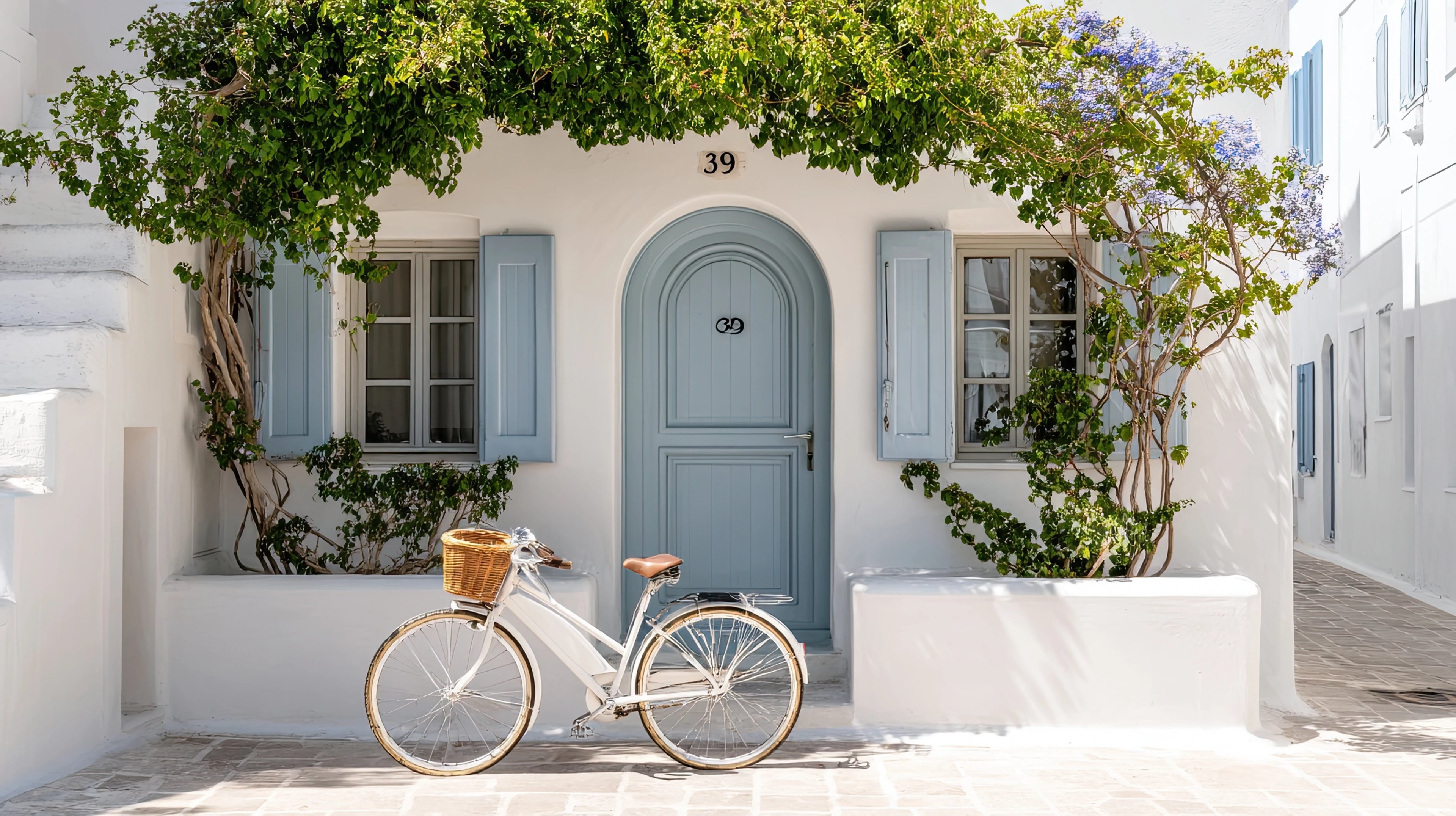
Short distances between landmarks, flexible ferry options, and plentiful sunshine create a cycling rhythm that’s relaxed, scenic, and culture-rich from start to finish.
1. Scenic Variety in Short Distances
Greece’s scenery shifts quickly and dramatically. Within a day’s ride, cyclists can move from turquoise bays to alpine villages, from olive plains to volcanic ridges. This compact variety makes every region feel distinct yet connected—each ride shaped by its own light, terrain, and rhythm.
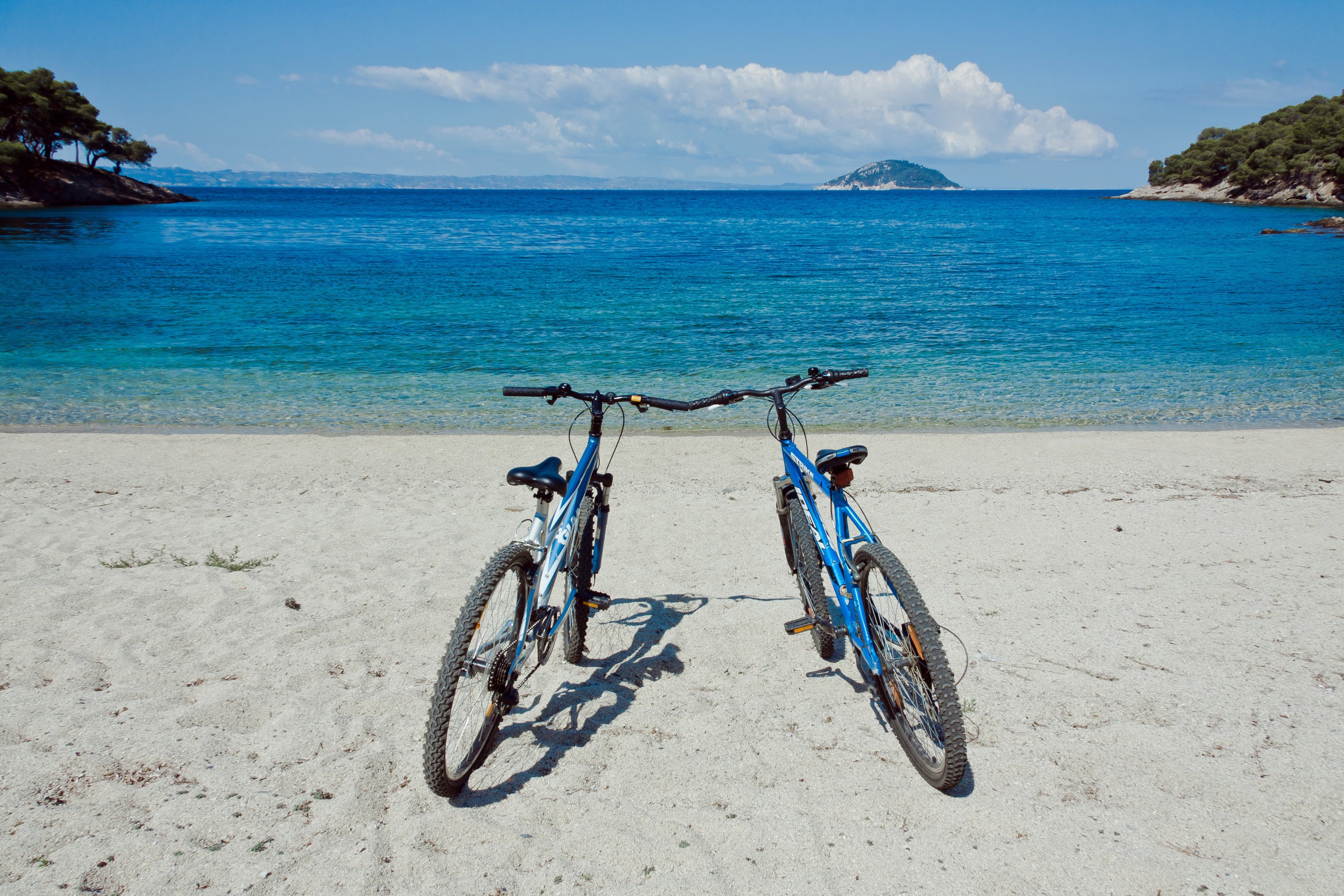
Routes range from gentle coastal loops to steady 600–1,000-meter climbs inland, giving both leisure and experienced riders plenty of choice.
Highlights Include:
- Cyclades Islands – Volcanic landscapes, whitewashed villages, and sea views at every turn; Naxos and Paros mix quiet inland roads with breezy coastal descents.
- Peloponnese – Rolling olive groves, limestone gorges, and mythological landmarks such as Mycenae and Epidaurus, all within reach of the sea.
- Crete – A cyclist’s micro-continent, offering coastal loops, 1,200-meter mountain climbs, and traditional villages perched above turquoise bays.
- Ionian Islands – Lush green hills and winding coastal roads with views toward Italy; Corfu and Kefalonia combine shade, sea, and short ferry links.
- Northern Greece – Forested valleys and alpine terrain around Meteora and Mount Olympus, where monasteries cling to cliffs and peaks frame every horizon.
See our Top Cycling Routes in Greece guide for full route comparisons.
2. History and Culture Along Every Route
Cycling in Greece means tracing more than four millennia of civilization. Ancient temples, Byzantine monasteries, and Venetian ports appear directly along modern cycling routes, often just minutes apart. Every region carries its own era—from Bronze Age citadels in the Peloponnese to whitewashed island towns shaped by medieval and Ottoman trade.
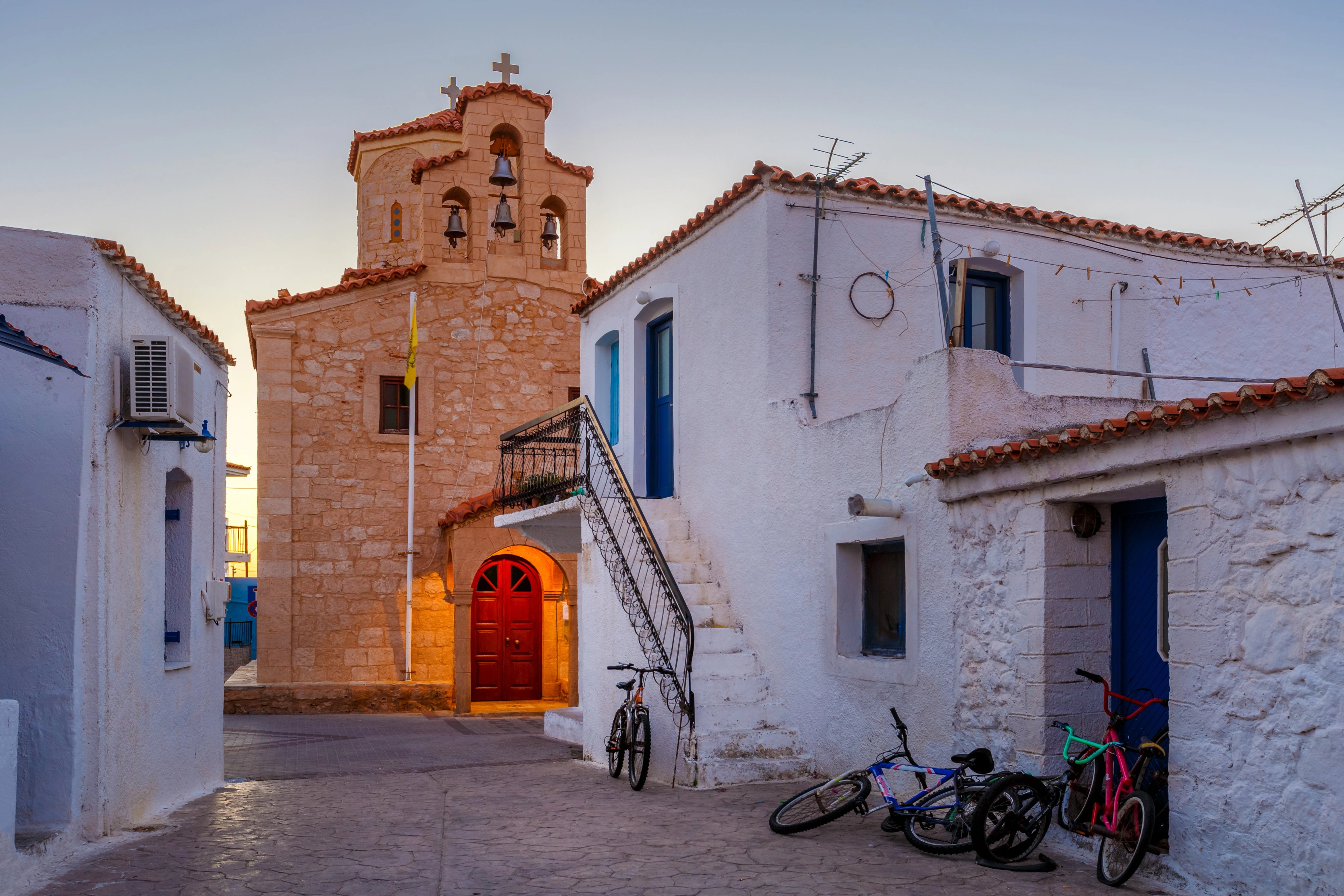
Rides often follow old pilgrimage or trade paths, passing archaeological sites and fortress towns that remain part of daily life. Even the smallest detour can reveal an ancient theatre, a ruined acropolis, or a monastery hidden among olive groves.
Cultural Highlights
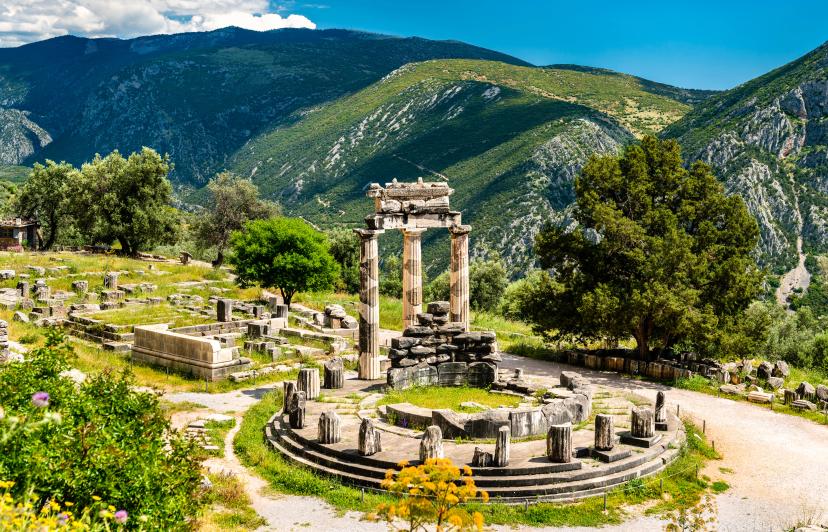
Delphi
Once considered the center of the world in ancient Greek mythology, Delphi sits on the slopes of Mount Parnassus overlooking the olive groves of the Pleistos Valley. The Sanctuary of Apollo and its famous oracle drew pilgrims from across the Mediterranean for over a thousand years. Key monuments include the Temple of Apollo, the well-preserved theater, and the ancient stadium used for the Pythian Games. The nearby Delphi Archaeological Museum houses masterpieces like the bronze Charioteer of Delphi.
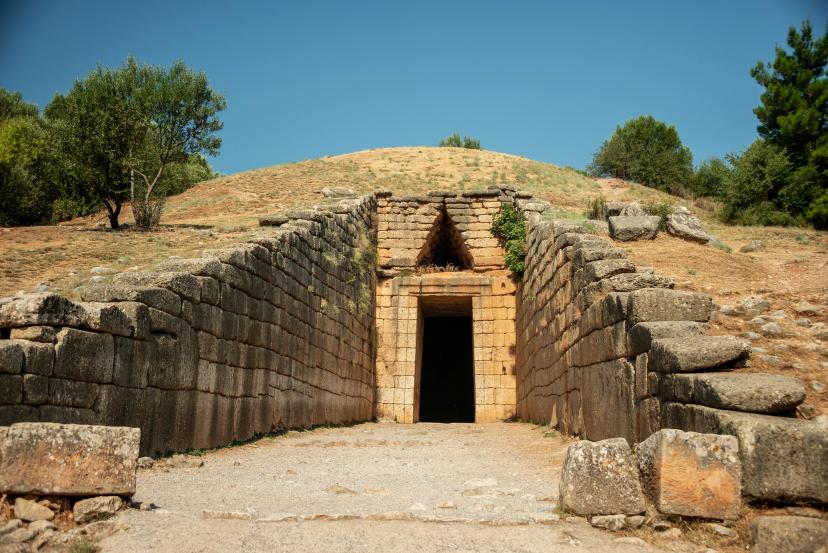
Mycenae
A Bronze Age citadel dating back to around 1600 BCE, Mycenae was once a powerful center of Mycenaean civilization and the legendary home of King Agamemnon. Cyclopean stone walls encircle the site, with the monumental Lion Gate guarding the entrance. Within the complex lie royal tombs and the beehive-shaped Treasury of Atreus, one of Greece’s most impressive tholos tombs. Its archaeological finds helped inspire modern understanding of Homeric-era Greece.
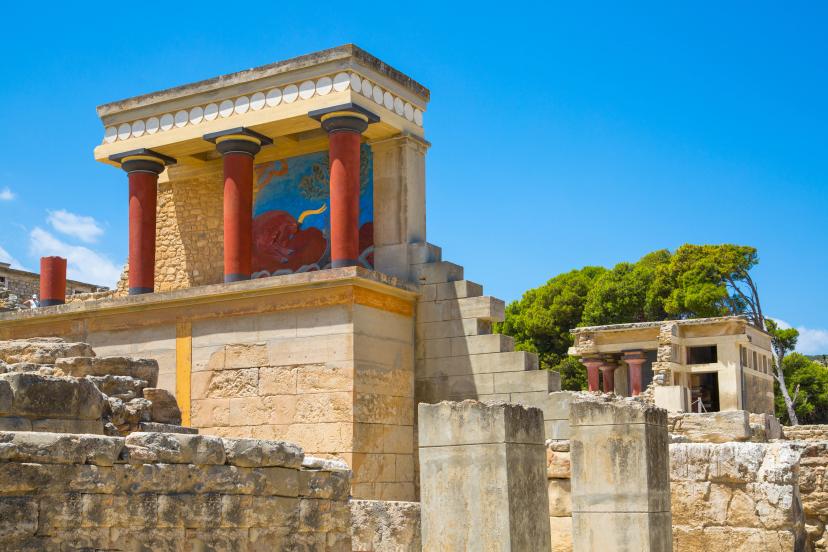
Knossos
Located near Heraklion on Crete, Knossos was the capital of the Minoan civilization — Europe’s oldest advanced culture — flourishing between 2000 and 1400 BCE. The reconstructed palace complex reveals vivid frescoes, intricate architecture, and early plumbing systems that suggest a sophisticated society. Linked to the myth of King Minos and the Labyrinth, Knossos represents the blend of legend and archaeology that defines ancient Crete. Artifacts from the site form the centerpiece of the Heraklion Archaeological Museum.
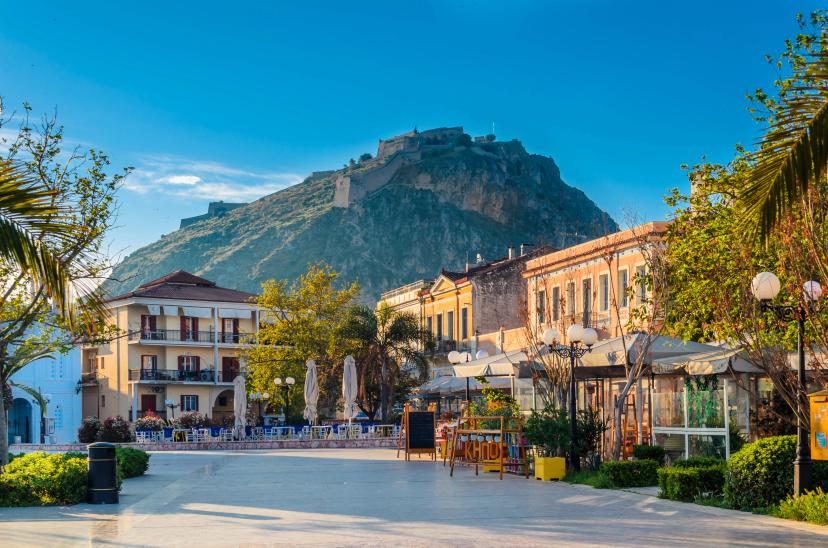
Nafplio
Nafplio, set on the Argolic Gulf, was the first capital of modern Greece and remains one of the country’s most elegant seafront towns. Its Venetian and neoclassical architecture is crowned by the Palamidi Fortress, built in the early 18th century. The old town’s narrow lanes, harbor promenades, and small squares reveal centuries of Ottoman, Venetian, and Greek heritage. Nafplio’s blend of history and atmosphere makes it a natural stop between ancient Argolis and the Peloponnese coast.
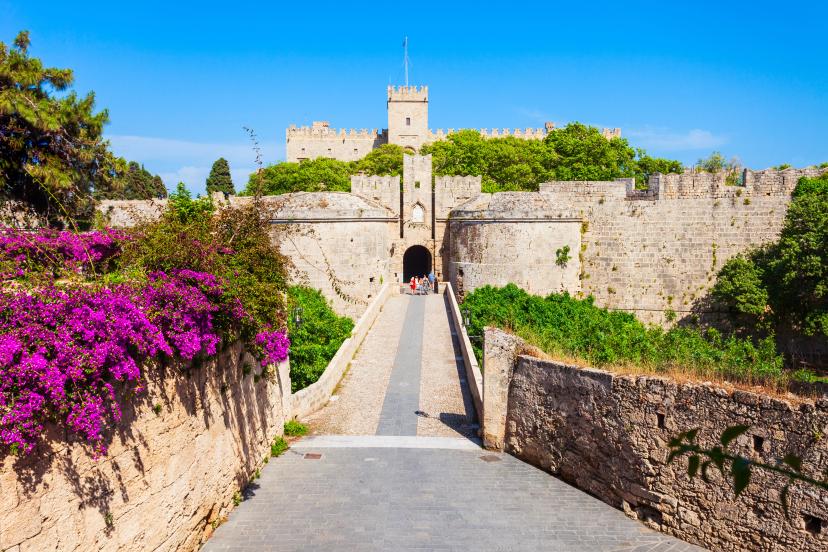
Rhodes Old Town
A UNESCO World Heritage Site, Rhodes Old Town is one of the best-preserved medieval cities in Europe. Its 4 kilometers of stone walls enclose Gothic, Ottoman, and Byzantine monuments that reflect centuries of layered history. The Street of the Knights leads to the Palace of the Grand Master, built by the Knights Hospitaller in the 14th century. Today, its cobbled alleys and lively squares capture the mix of East and West that defined the island’s strategic past.
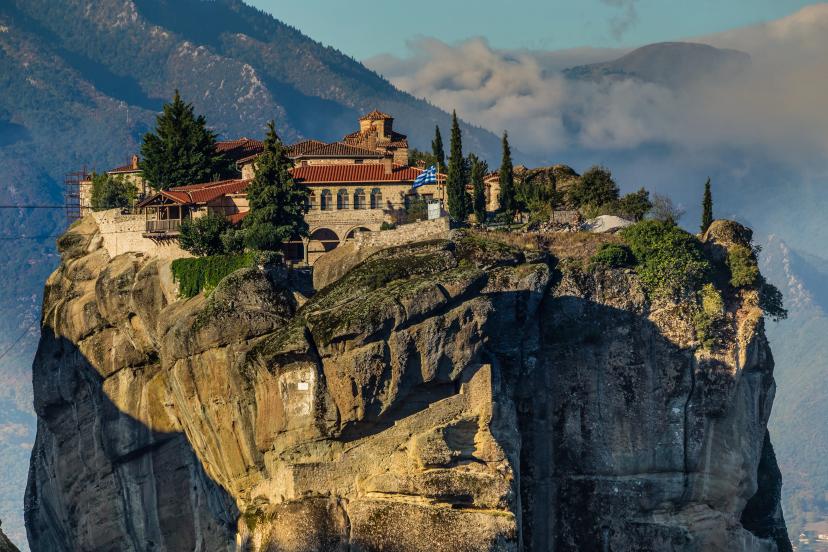
Meteora Monasteries
Perched on towering sandstone pillars in central Greece, the Meteora Monasteries form one of the most striking religious complexes in the world. Built between the 14th and 16th centuries, the monasteries were once accessible only by rope ladders and winches. Six remain active today, blending Byzantine frescoes and serene chapels with panoramic views over the Thessalian Plain. The name “Meteora,” meaning “suspended in air,” reflects both their isolation and their spiritual symbolism.
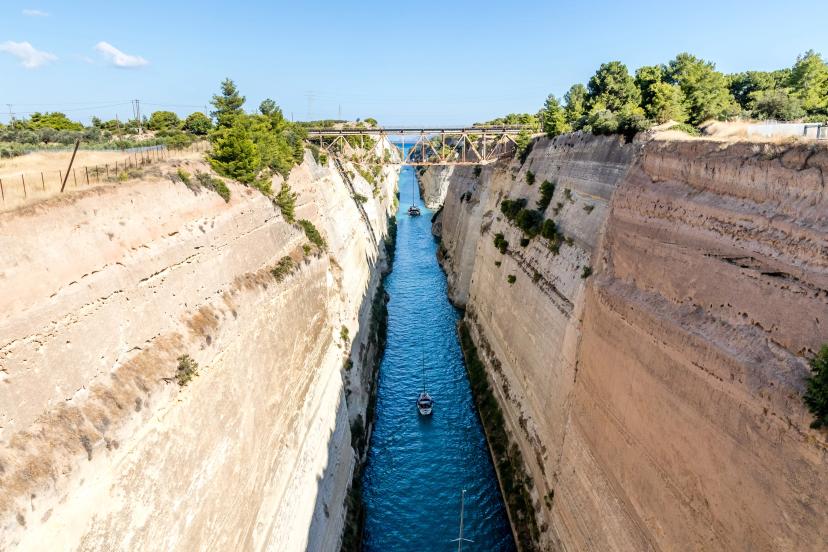
Corinth and Epidaurus
Ancient Corinth was a major trade hub linking mainland Greece with the Peloponnese, famed for its wealth and the Temple of Apollo. Nearby, the Corinth Canal—cut through solid rock in the 19th century—remains an engineering marvel. To the south lies Epidaurus, the renowned sanctuary of Asclepius, god of healing, and home to a theater celebrated for its perfect acoustics. Together they illustrate the breadth of classical Greek ingenuity, from commerce to culture.
Every stage doubles as a ride through living history—where mythology, faith, and Mediterranean life still intertwine on the road.
Learn more about must-visit landmarks on our Greek sites guide.
3. Perfect Climate for Cycling
With more than 300 sunny days per year, Greece enjoys one of Europe’s longest and most reliable cycling seasons. Mild winters and low rainfall in spring and autumn make it possible to ride comfortably from March to November.
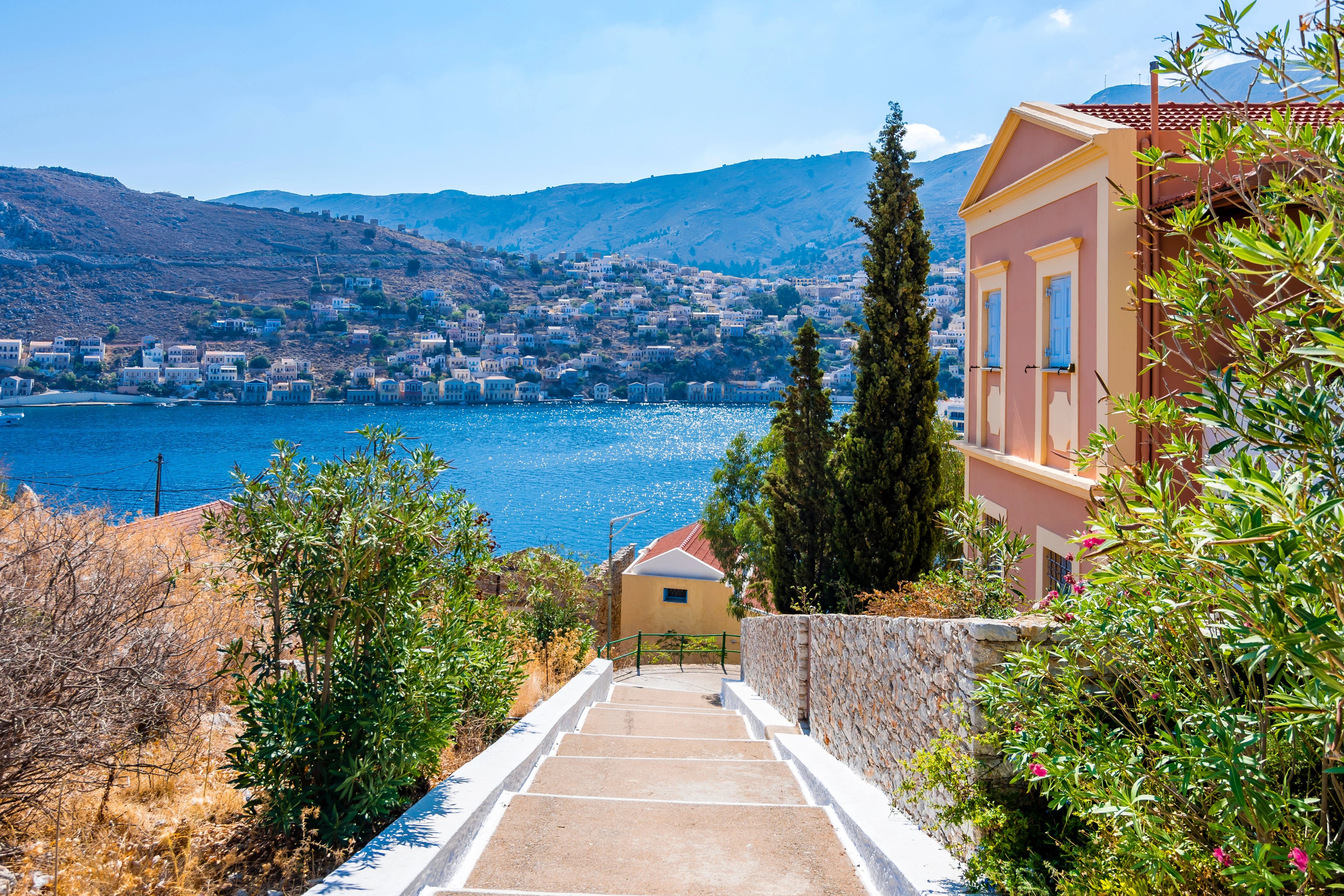
Compared to Central Europe, the Greek cycling season lasts two to three months longer, with fewer rainy interruptions and consistently bright light.
Spring and autumn are ideal for most routes, bringing warm days, clear skies, and comfortable temperatures for long-distance touring. Summer rewards early starts and island stages cooled by coastal breezes, while winter riding remains pleasant only in the far south and Crete.
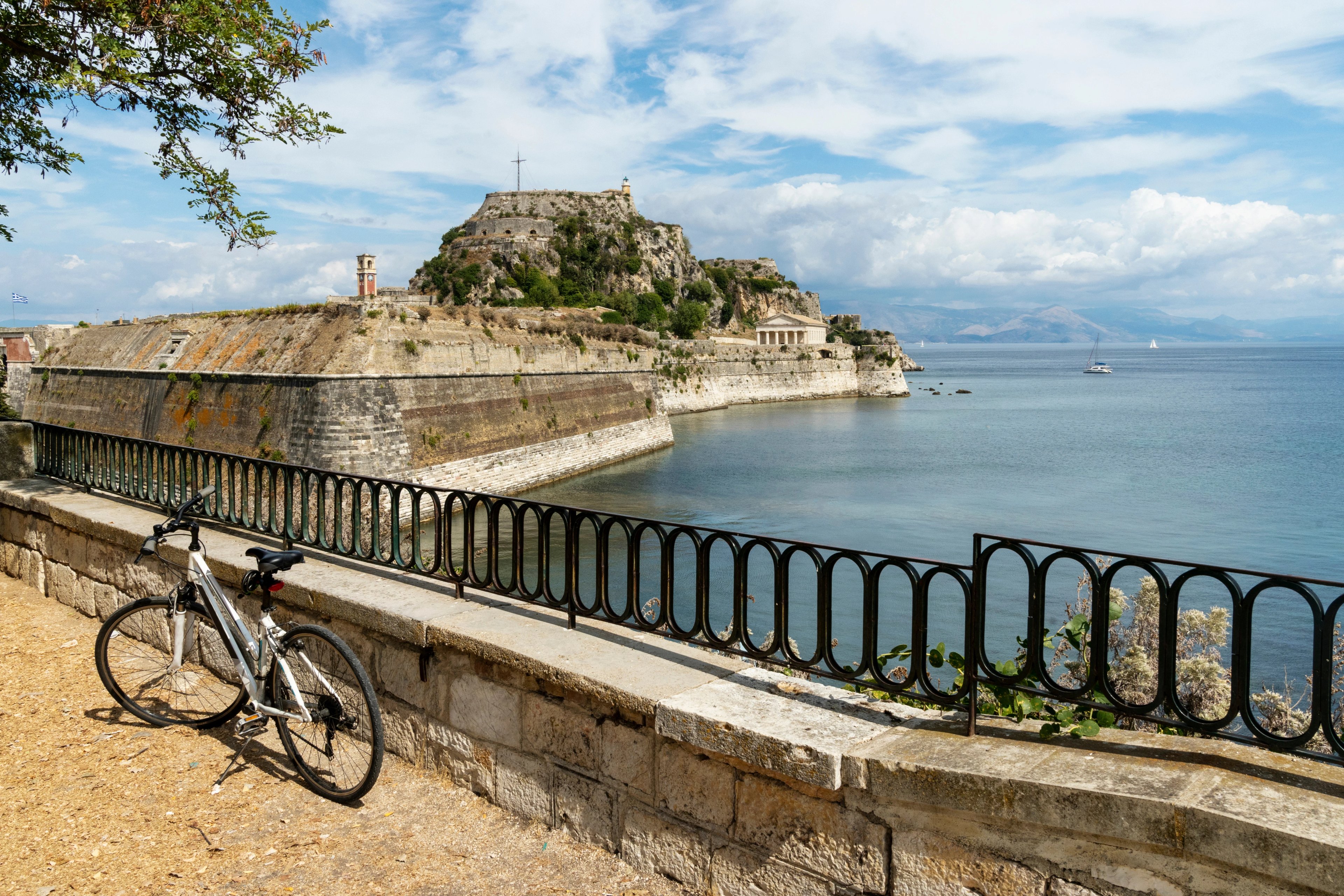
At a Glance
- Spring (Mar–Jun): 18–26 °C, green hillsides and wildflowers in bloom.
- Summer (Jul–Aug): 30 °C +, dry and sunny — early rides and sea swims recommended.
- Autumn (Sep–Nov): 20–28 °C, warm seas, golden light, and fewer crowds.
- Winter (Dec–Feb): Mild only in Crete and the southern Peloponnese; wetter and windier elsewhere.
Seasonal variety lets cyclists choose between vibrant spring landscapes, relaxed autumn warmth, or summer routes that mix riding with swimming and island life.
See detailed advice on our month-to-month Greek weather guide.
4. A Rising Cycling Culture
Cycling in Greece is evolving quickly. Once known mainly for sailing and hiking, the country is now embracing two wheels as part of its growing slow-travel movement. E-bike networks, new route signage, and municipal initiatives are transforming both islands and mainland regions into more bike-friendly destinations.
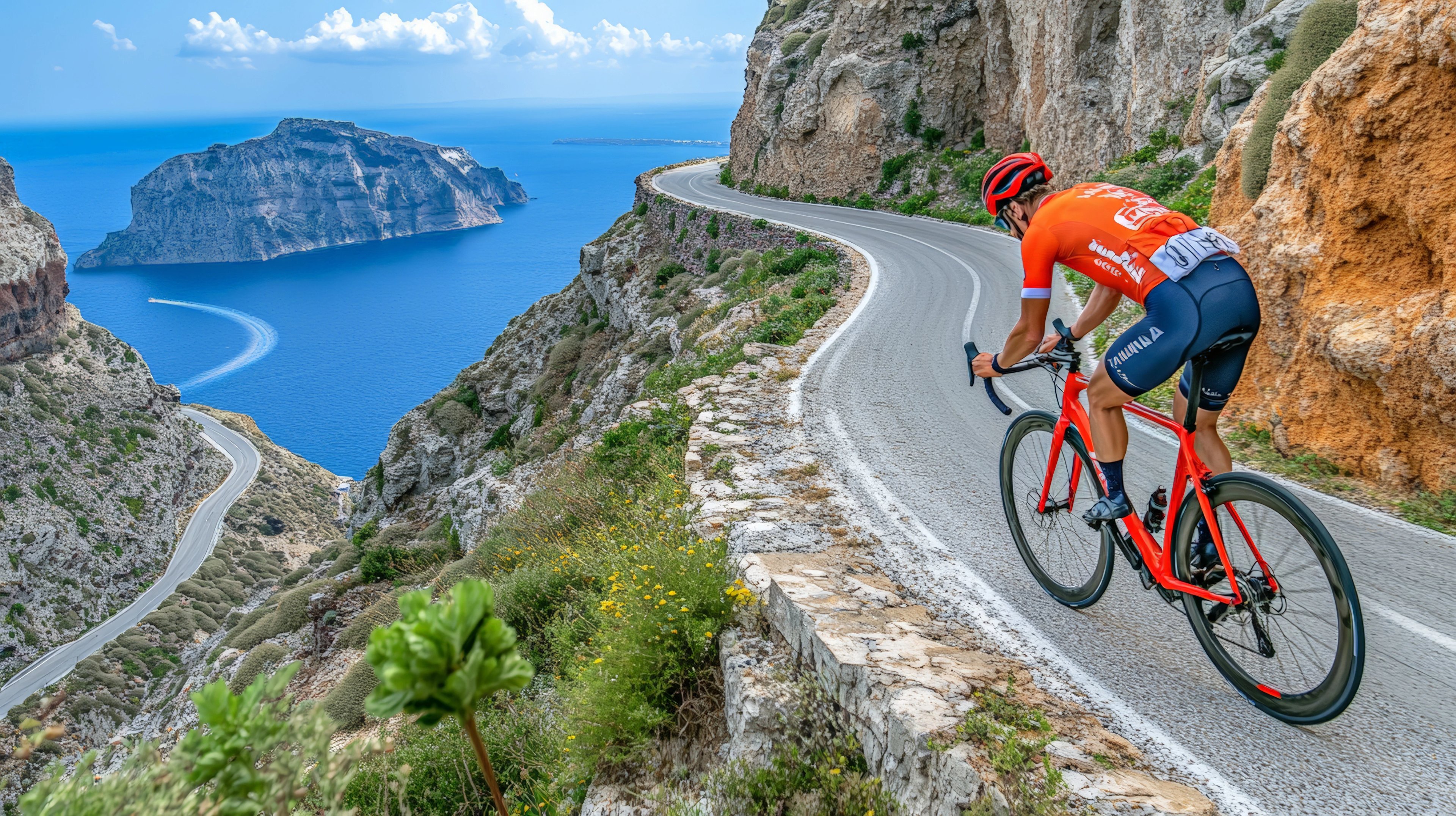
Cities like Athens, Kalamata, and Heraklion are developing coastal bike lanes and rental hubs, while regional authorities in Crete and the Peloponnese have invested in route mapping and cycling infrastructure. Organized tours and local guides make longer routes accessible without the need for complex logistics.
Good to Know
- E-bike chargers are available across all major islands and mainland hubs.
- Marked POIs, GPS navigation, and luggage transfers are included in the tours.
- Domestic flights and ferries connect cycling regions efficiently year-round.
- Many local businesses now cater specifically to cyclists, from boutique stays to farm-to-table tavernas.
Cycling here is becoming part of the Greek way of travel—unhurried, scenic, and deeply connected to local life.
5. Safe and Welcoming for Travelers
According to Conde Nast’s Traveller Magazine, Greece ranks 6th among Europe’s safest and most visitor-friendly destinations. Outside the busiest cities, roads are calm, locals are courteous, and cyclists are often met with genuine hospitality. Small towns remain deeply community-oriented, where stopping for water or directions often leads to friendly conversation and a smile.

The combination of light traffic, good road surfaces, and a relaxed pace of life makes rural Greece especially comfortable for touring cyclists. Crime rates are low across most tourist areas, and English is widely spoken, particularly in the islands and coastal regions.
Travel Ease
- English is commonly spoken throughout tourism zones.
- Locals are known for helpfulness and spontaneous generosity toward travelers.
- Rural roads are generally well-paved and quiet, with patient drivers.
- Low crime rates and safe cycling conditions in most regions.
It’s a country where slow travel still feels authentic, and hospitality is not a slogan but a natural part of everyday life.
6. Mediterranean Food Culture Made for Cyclists
In Greece, food is never just a meal — it’s part of the journey. Fresh, seasonal ingredients and simple recipes make the cuisine both nourishing and restorative after a day on the bike. Riders can expect long seaside lunches, shaded taverna stops, and dinners that stretch into the evening with local wine and conversation.
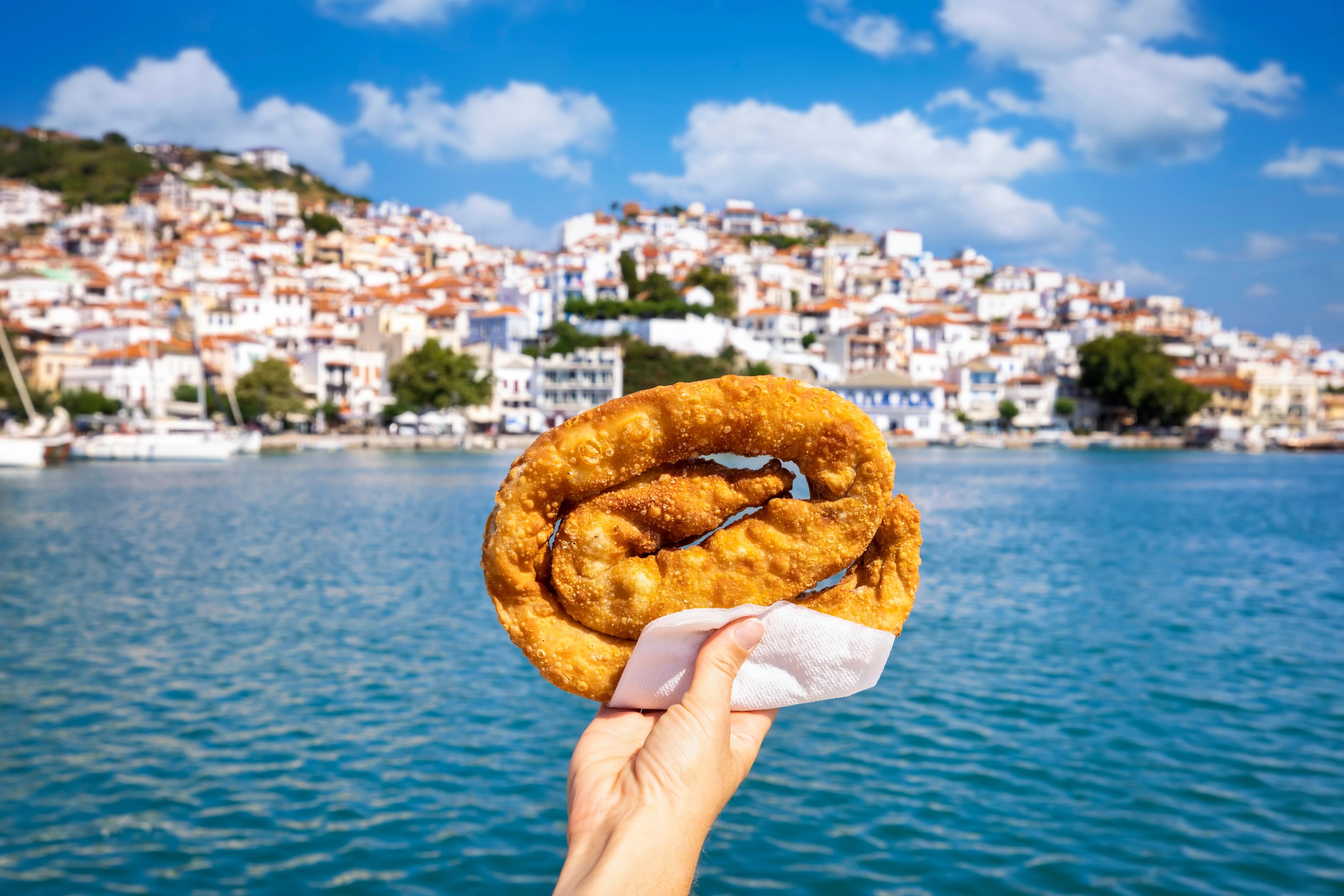
Meals are naturally suited to active travelers: olive oil, grilled fish, vegetables, and legumes form the base of one of the world’s healthiest diets. Each region adds its own flavor, from mountain cheeses to coastal seafood, always served in generous portions meant for sharing.
Regional Flavors
- Cyclades: Grilled fish, capers, Santorini fava, and crisp white wines.
- Peloponnese: Olive oil, slow-cooked lamb, citrus, and Nemean reds.
- Crete: Mountain cheeses, wild herbs, honey, and the local spirit raki.
- Ionian Islands: Venetian-inspired dishes like sofrito and pastitsada.
Cycling and cuisine follow the same rhythm here — unhurried, social, and rooted in place. Each stop offers a chance to refuel and connect with the landscape through its flavors.
Explore more in our Greek cuisine & wine guide.
7. Easy Connections and Travel Logistics
Greece is straightforward to access and navigate, with excellent links between major cycling regions and islands. International airports, domestic flights, and year-round ferries make it simple to move from one route to the next without complicated planning. Most organized cycling tours include transfers, luggage transport, and local support, so riders can focus entirely on the experience.

Mainland routes connect easily with the islands, allowing travelers to combine cultural and coastal rides in one trip. Rental hubs and service points are widespread, particularly in port towns and tourist centers.
Getting Around
- Main airports: Athens, Thessaloniki, Heraklion (Crete), Kalamata, and Santorini.
- Bike transport: Allowed on most ferries and trains.
- Support services: Tour operators handle luggage transfers, accommodation, and technical assistance.
- Domestic connections: Flights and ferries make linking regions quick and reliable year-round.
Cycling in Greece offers a sense of freedom without complexity — easy arrivals, seamless transfers, and routes that flow naturally from one landscape to another.
See more about getting around on your tour in the Ultimate Guide to Cycling in Greece.
8. Combine Cycling with Other Adventures
Few countries blend cycling with such a variety of experiences. In Greece, every route invites detours into nature, archaeology, or the sea — making it easy to turn a cycling holiday into a complete Mediterranean adventure. Between rides, travelers can hike through gorges, visit ancient theatres, or simply relax on quiet beaches and harbor promenades.
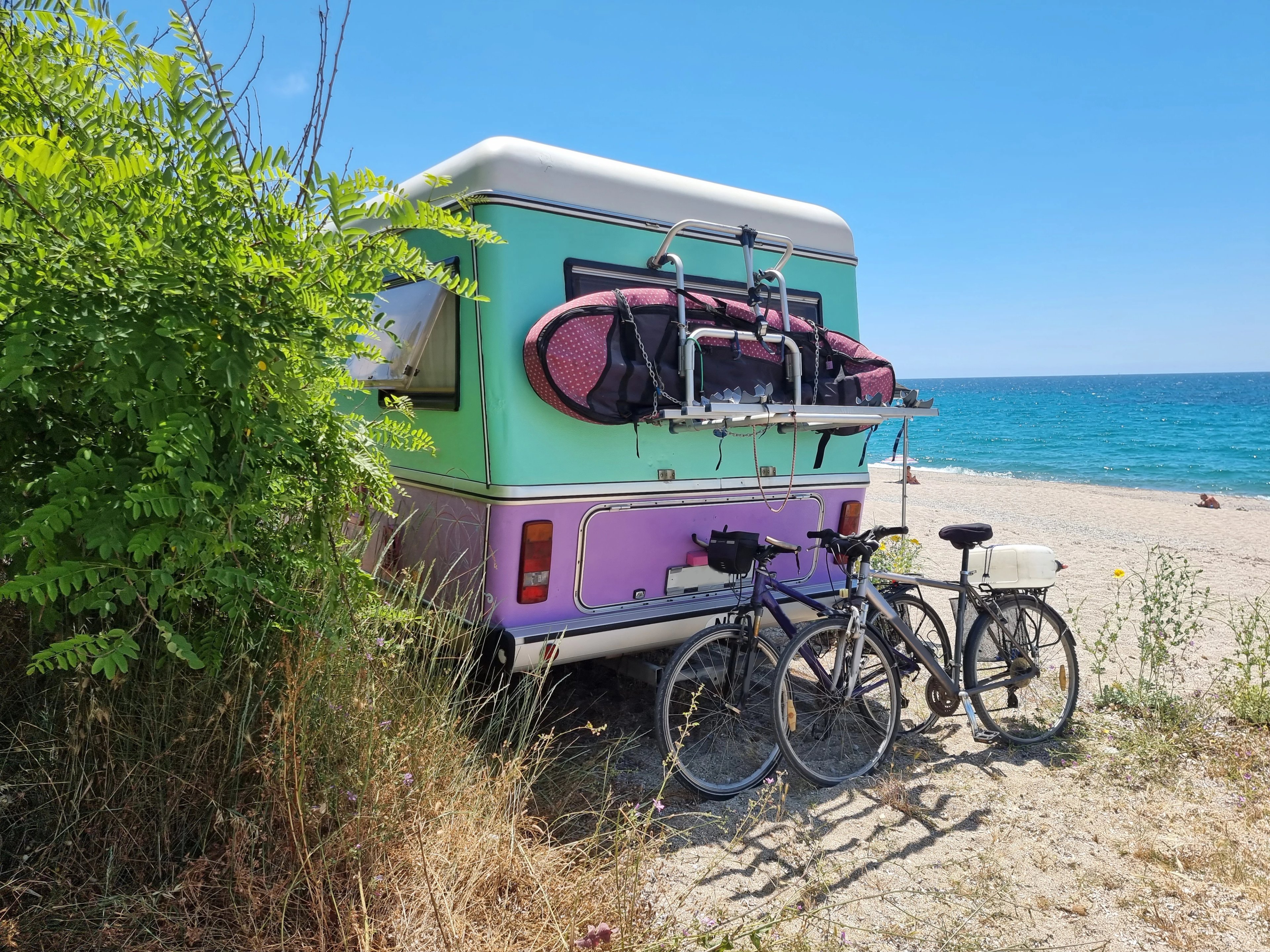
The terrain’s diversity means that cultural exploration and outdoor activity often overlap. One day might bring a mountain descent to a Bronze Age site; the next, a swim beneath Venetian fortifications or a walk through olive groves to a rural taverna.
Ideas
- Add a hike through the Samaria Gorge on Crete or the Vikos Gorge in Epirus.
- Visit ancient theatres and olive mills across the Peloponnese.
- Swim at hidden beaches or thermal springs after a coastal ride.
- Extend your trip with cultural visits, sailing experiences between islands or even surfing!
Each itinerary can become a complete Greek journey — scenic, cultural, and active in equal measure.
Contact us and we’ll help you shape your cycling holiday into a tailor-made adventure.
Experience our easily-customizable Greek tours:
9. Island Hopping by Ferry
Ferries are an essential part of cycling in Greece, linking riders to new islands, routes, and landscapes within a single trip. The network is extensive and reliable, connecting hundreds of islands across the Aegean and Ionian Seas. For cyclists, this means the freedom to combine volcanic cliffs, pine-covered coasts, and quiet fishing harbors in one seamless itinerary.
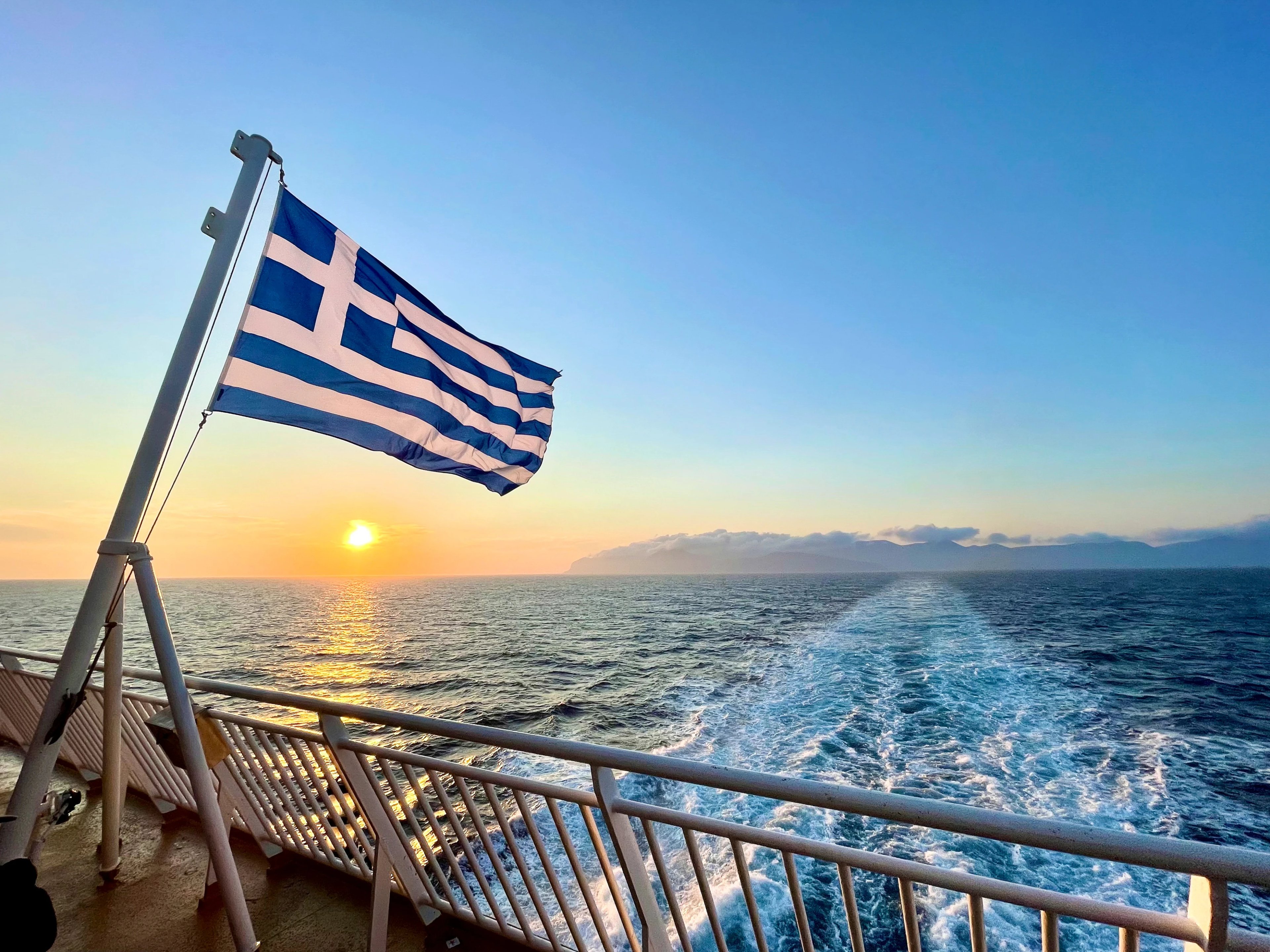
Many ferry companies welcome bicycles at little or no extra cost, and schedules operate year-round, with additional services during the summer months. Boarding is simple — cyclists roll their bikes directly onto the deck, making inter-island travel both practical and scenic.
How It Works
- Frequent services link Naxos, Paros, Santorini, and Crete, with routes also connecting the Ionian Islands and the Peloponnese coast.
- Most ferries accept bikes without additional fees; reservations are recommended in July and August.
- Major ports such as Piraeus, Rafina, and Patras serve as gateways between the mainland and island groups.
- Seasonal routes increase during summer, offering flexibility for multi-island itineraries.
Cyclists can ride a different island every few days — combining scenic stages, regional cuisine, and the slow rhythm of sea travel between rides. We pre-book most ferry connections for our guests, while a few are arranged locally to suit weather and schedules. All are selected for their reliability and bike-friendly service.
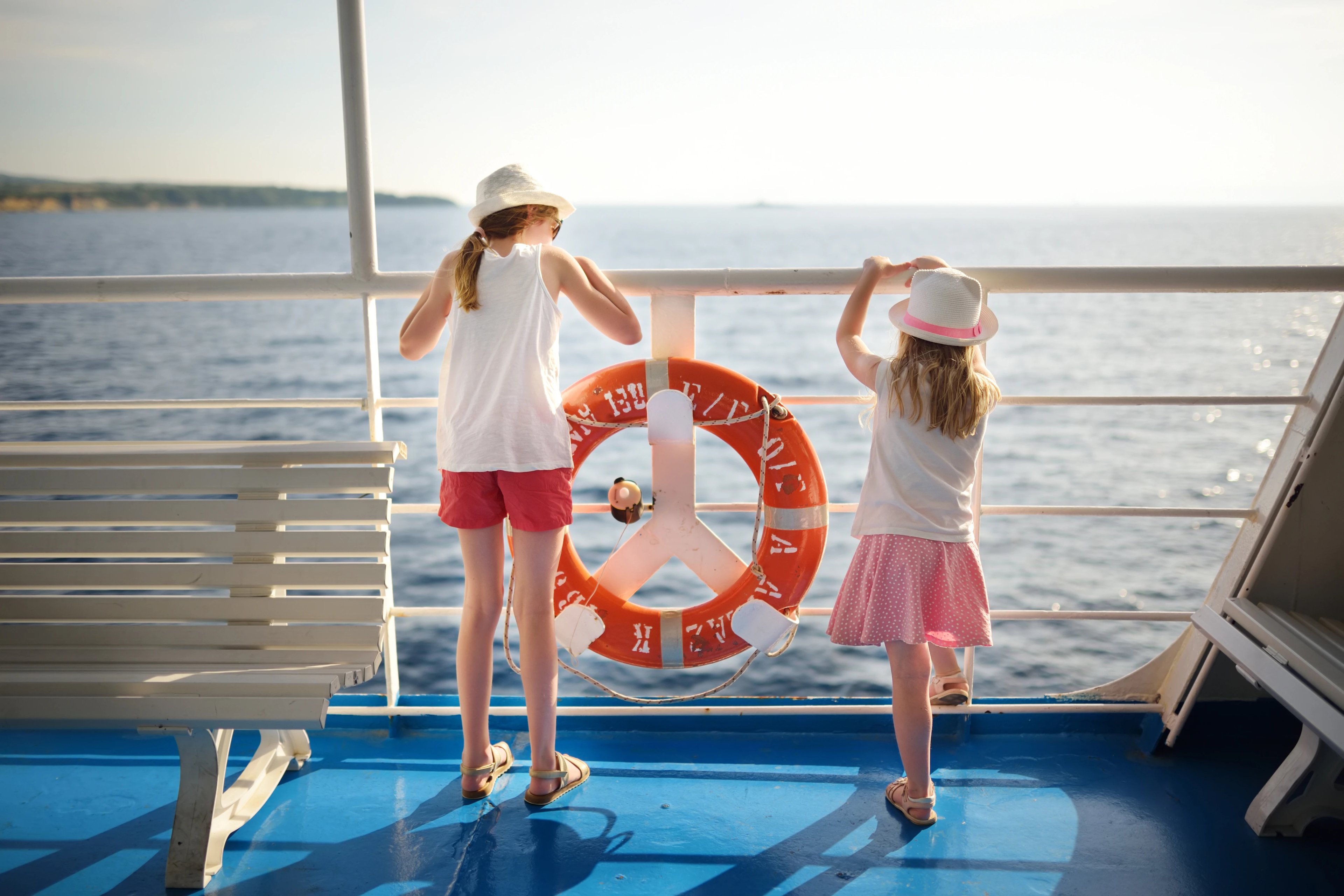
Discover the magic of ferry travel first-hand on the Cyclades and Ionian Islands cycling tours:
Cycle Greece Your Way
From island loops to mountain climbs, Greece offers variety few countries can match — sunshine, heritage, and authentic Mediterranean life on every route.
Ride past olive groves, ancient ruins, and blue horizons, or link islands by ferry for a one-of-a-kind adventure. Each region reveals a different side of Greece — from volcanic islands to mythic mainland passes.
Explore our Greek bike tours or get in touch to plan the route that fits your pace and style.

Hassle-Free
We handle itineraries, accommodations, and anything else you prefer not to deal with, so you can enjoy a carefree holiday.

Completely Customizable
Flexibility is our middle name — whether you want more or less, or just beyond ordinary, we’ll make it happen.

Book with confidence
We are a financially protected company, fully bonded and insured, keeping your money safe and allowing you to travel with confidence.

Unbeatable support
Our 24/7 customer support is where we show our passion, bringing you a better experience by making your well-being our number one priority.




.jpg&w=3840&q=75)
